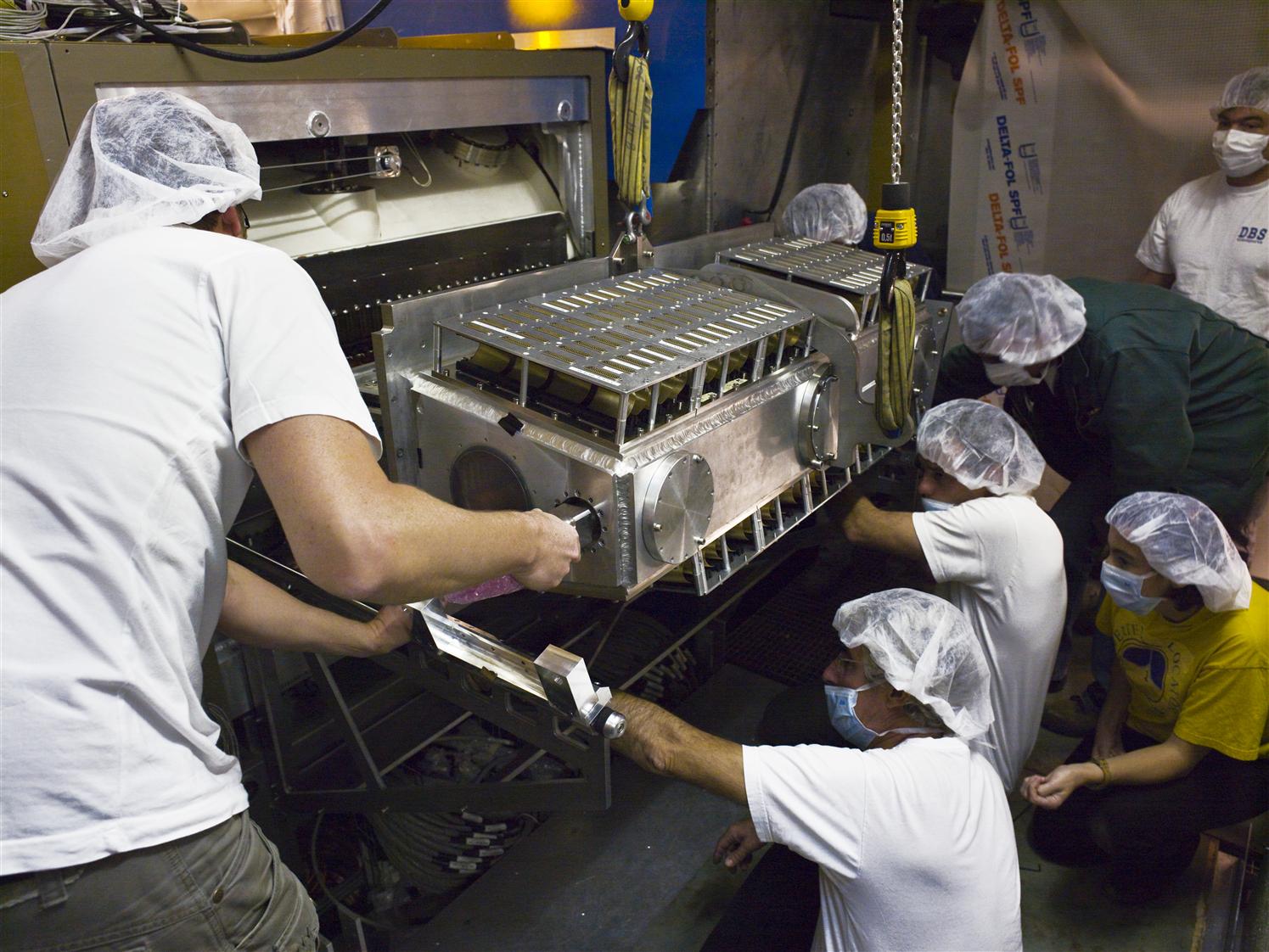Green light for the VELO
Ten years after the beginning of the project, the LHCb’s delicate VELO detector has been successfully installed in its final position.
LHCb’s most fragile detector, the VELO, has been successfully installed in its final position. The first half was gently slid into place on 30 October and the second half followed on 31 October. For the LHCb collaboration, installing the Vertex Locator (VELO) detector into the VELO tank underground in the experimental cavern at CERN has been a challenging task.
The VELO is a precise particle-tracking detector that surrounds the proton-proton collision point inside the LHCb experiment. At its heart are 84 half-moon shaped silicon sensors, each one connected to its electronics. The sensors, which are grouped in pairs to make a total of 42 modules, were constructed at Liverpool University. They will play a crucial role in detecting b quarks, the particles that will help to explain why matter and antimatter behave so differently. As it is placed extremely close to the beam line, the VELO must be radiation-hard and very precise in taking measurements. It will have to take trigger decisions about once per millisecond in order to select the interesting interactions that the LHCb experiment is designed to study at the LHC.
"This is a defining moment for the VELO team," said Paula Collins, LHCb-VELO project leader. "For this to work we need all of the experts from the VELO side, as well as the mechanical and electrical experts for the LHC vacuum. There will be plenty of pumping down from atmospheric pressure and venting to bring the pressure up again, during which we will have to protect the silicon sensors and their fragile encapsulating foil. In order to have the ability to pick out the signal B decays from the background we also need to precisely align the two retractable halves during the insertion."
The two halves, each consisting of 21 modules, were transported from their assembly room in Meyrin to the experimental site with a suite of custom-made lifting devices and transport trolleys, equipped with strong shock absorbers. They were then turned and inserted sideways into the VELO vacuum tank. Custom-made bellows were constructed which enable the VELO to retract to 35 mm and then move back to its original position of just 5 mm from the beam line. This flexibility is crucial during the stabilizing of the LHC beam. The silicon sensors measure the location of the beam and help to centre the VELO around it.
The VELO is a unique detector that comprises a 110 cm section of the beam pipe. An aluminum sheet just 0.3 mm thick provides a shield between the silicon modules and the primary beam vacuum. This corrugated "foil", constructed by NIKHEF and the free University (Amsterdam), is designed with ridges which allow the two halves to overlap each other. There is not more than 1mm of leeway to the silicon modules. "It was very tricky, because we were blindly sliding in the detector," said Eddy Jans, VELO installation coordinator, "and as these modules are so fragile, we could have damaged them all and not realized it right away." Happily the verification procedures carried out on the silicon modules after installation indicated that no damage had occurred.
The VELO project has been ongoing for the past 10 years. This milestone marks the moment at which the construction phase of the project has been brought successfully to fruition. As Collins sums up, "the VELO is now in place for physics".



